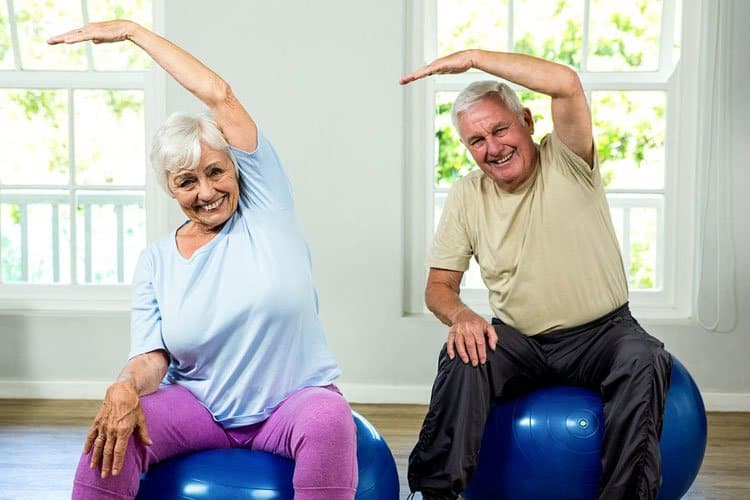We know it’s important to exercise to stay fit, but did you know it’s important to consider joint mobility? Normally we focus on strength and flexibility exercises, but we forget the importance of keeping our joints in shape so they can perform normal movements.
We explain why it is important to keep our joints in shape and we show you some very simple and quick exercises that you can do every day.
What Is Joint Mobility?
Joint mobility is the ability of a joint to move in one direction through its range of motion (ROM). The ability to move is measured in degrees and is limited by bone or cartilage, fascia or body mass.
The joint is a structure that sits at the junction between two bones and is usually made up of a joint capsule, ligaments and cartilage. All of this is covered by a synovial membrane that nourishes and protects it.
Age and a sedentary lifestyle are the worst enemies of joint mobility. In addition, when factors such as bone problems, muscle weakness, pain and joint problems are added, the ability to move joints decreases. If a person loses significant joint mobility, they are said to have Ankylosis.
It is important to adapt the physical exercises to avoid pain due to pathologies. Normally, depending on the person, it is advisable to walk, use the elliptical, cycle, swim or do aquagym. These exercises, combined with stretching, will improve the mobility of your joints.
The result is a greater range of motion, improved fitness with less fatigue (as heart rate is improved), more strength and overall good health. In addition, by exercising the joints, neuromuscular processes are also improved.
Differences Between Flexibility and Joint Mobility
Flexibility should not be confused with joint mobility. Flexibility is the ability of muscles to be elastic and have a lot of movement. Joint mobility, on the other hand, is the ability to perform movements with the joint without causing pain. If flexibility is added, the range of motion can be greater.
Why Is Joint Mobility Important?
Joint mobility is important to the proper functioning of the musculoskeletal system. When a joint cannot achieve maximum range of motion for a long period of time, the body eventually adapts to this loss of mobility and the muscles can wear out. Therefore, it is important to work to prevent this from happening through exercise, especially in the elderly.
Also, in the case of athletes, they need to take special care of their joints. Because if the movement of the joints is not worked on properly, there is a greater risk of suffering from injuries such as muscle tears.
Risk Factors for the Development of Joint Mobility Problems
Age is a risk factor for the development of joint mobility problems. This is partly because with age, the amount of hyaluronic acid and collagen in the joints decreases:
– Hyaluronic acid: recovers viscosity and elasticity and prevents pain and improves the joint. In addition, it is a natural lubricant between the cartilage and ligaments.
– Collagen: it is a protein found, in particular, in the joints, which provides flexibility, elasticity and support.
Another important factor that directly influences the appearance of joint mobility problems are
– Osteoarthritis: produces inflammation in the joints.
– Arthritis: the synovial membrane of the joints is deteriorated, which prevents the pain due to friction of the joints.
How to Improve Joint Mobility?
To maintain or improve joint mobility, we recommend the following:
– Sleep well: getting the necessary hours of sleep will help strengthen and regenerate joints.
– Consult a health care professional: It is important to have the advice and evaluation of a professional when joint mobility problems are detected. This way, you will get a specific treatment regime.
– Exercise: This will help improve joint mobility and prevent stiffness.
– Improve mobility: including stretching exercises or practicing yoga or Pilates.







